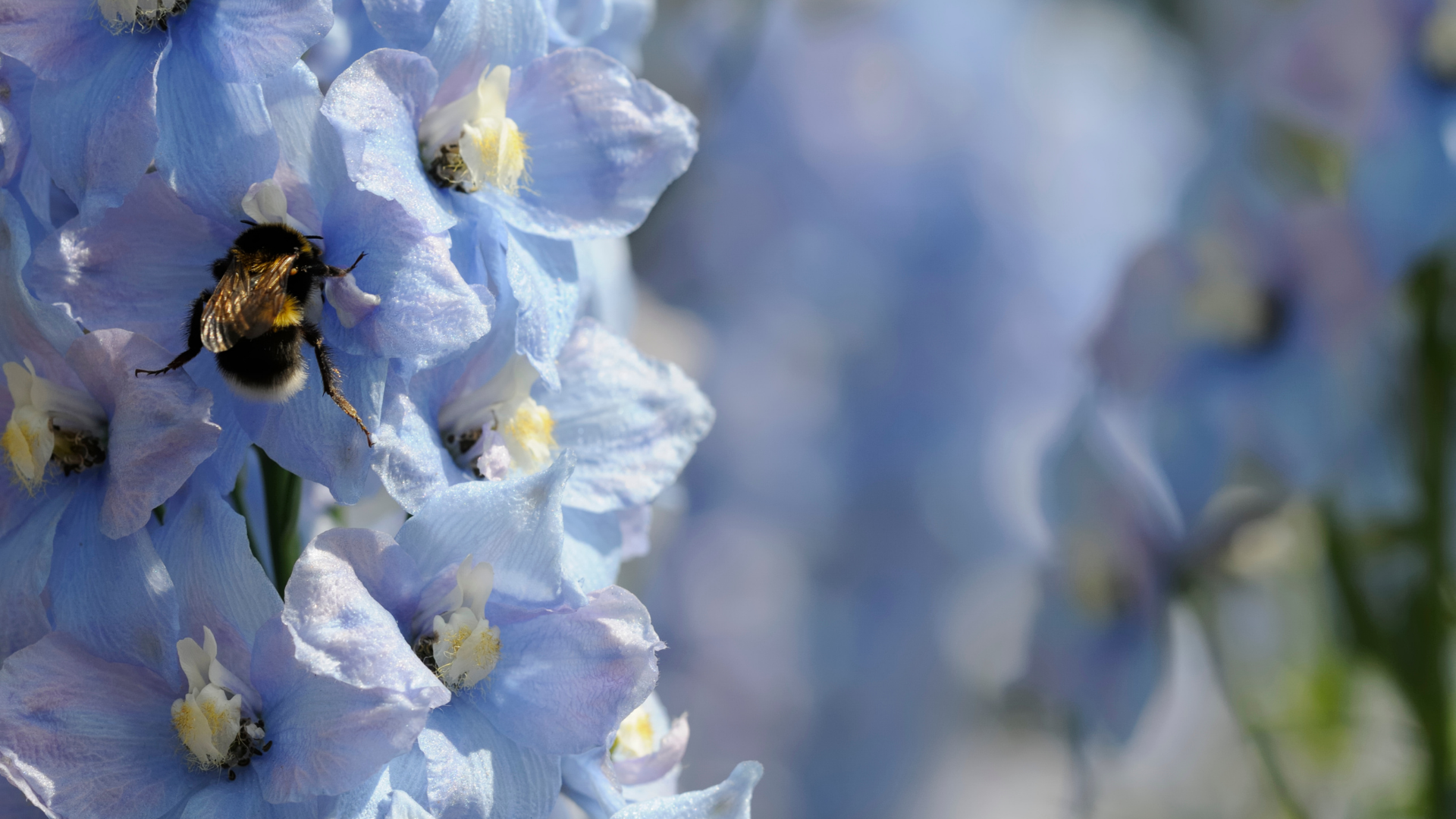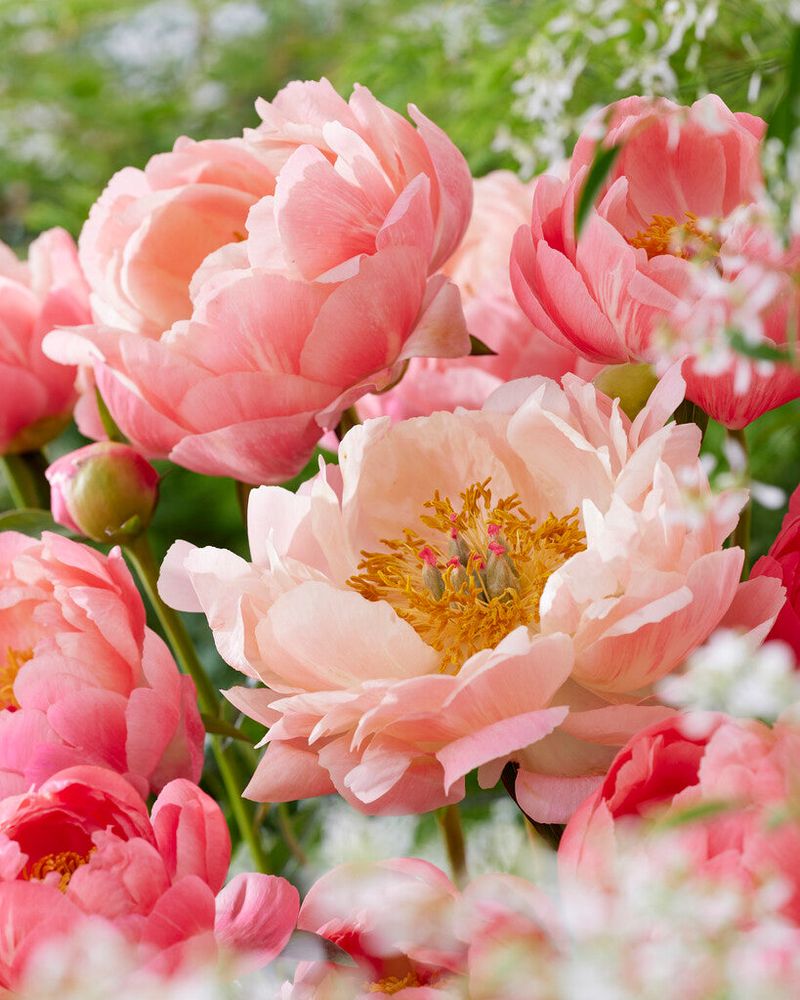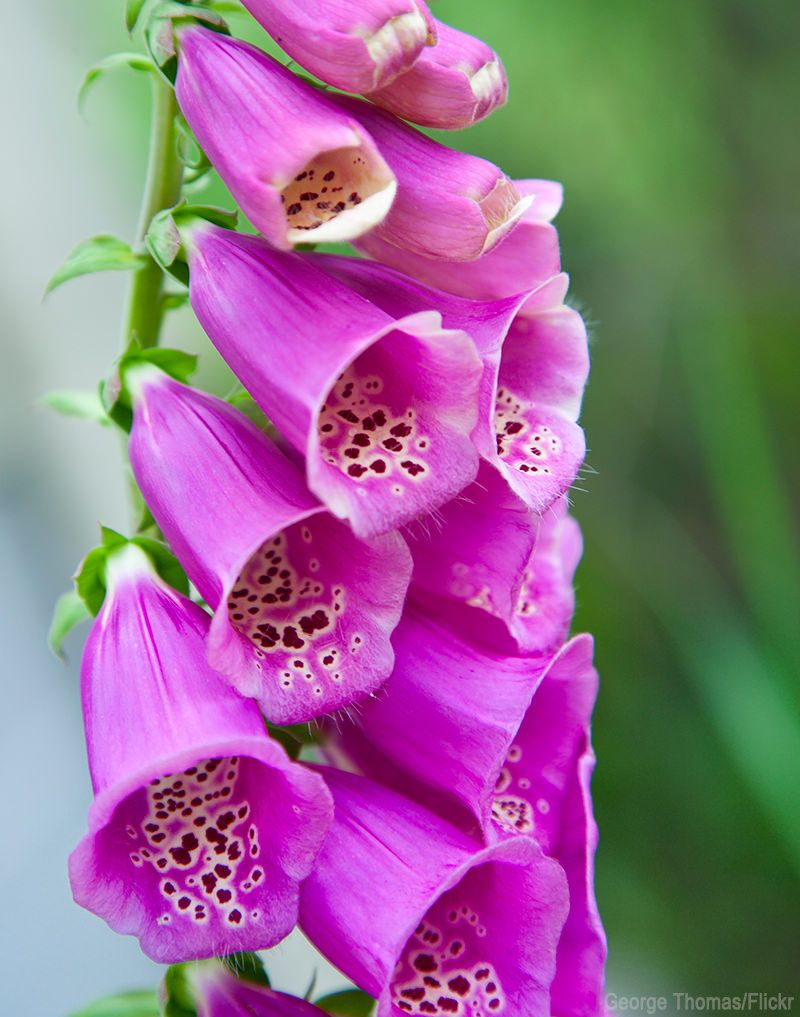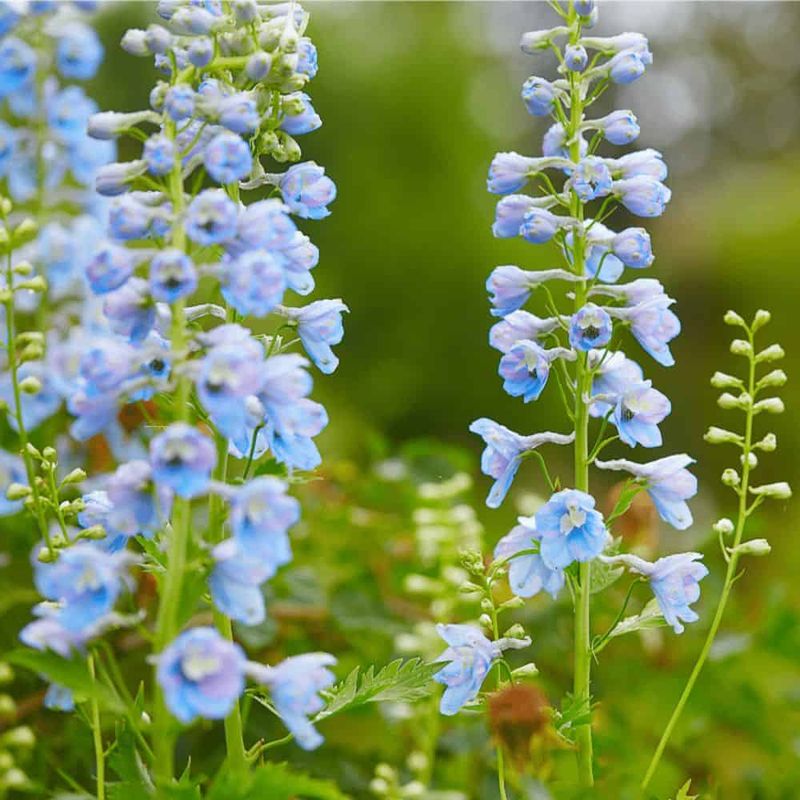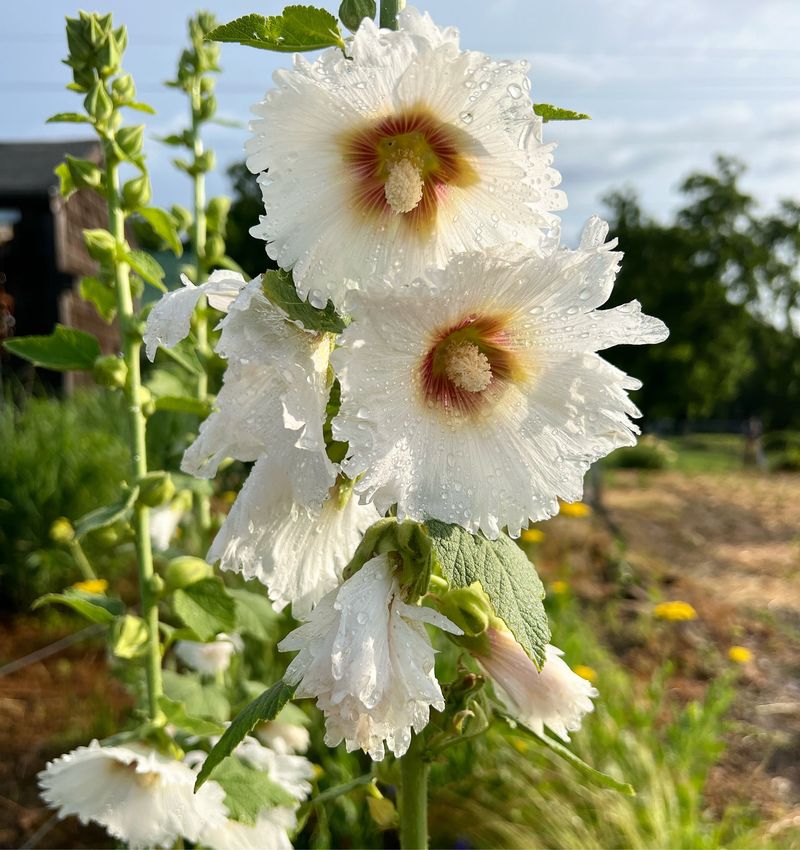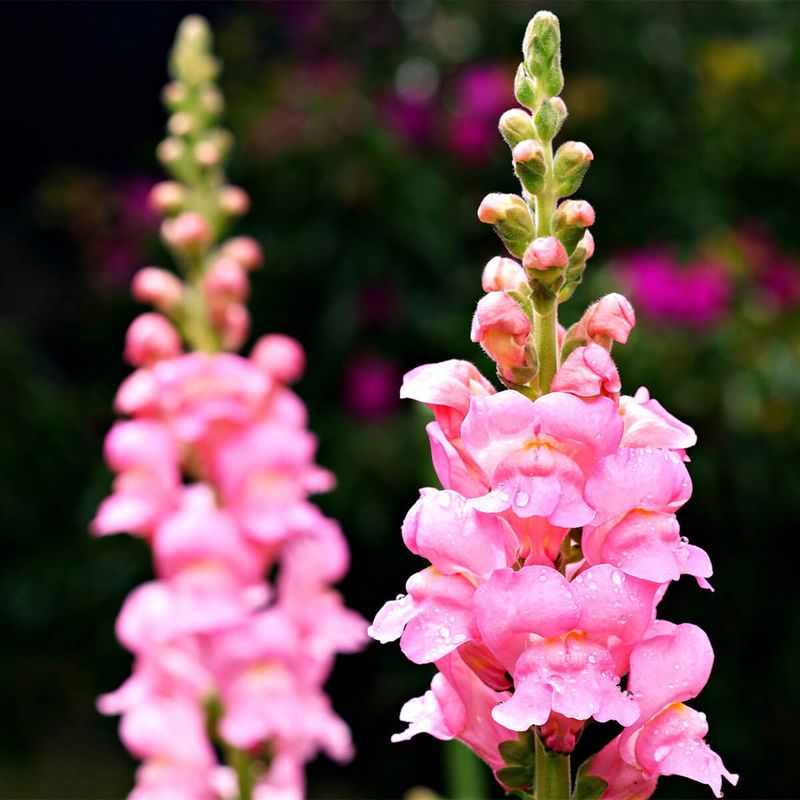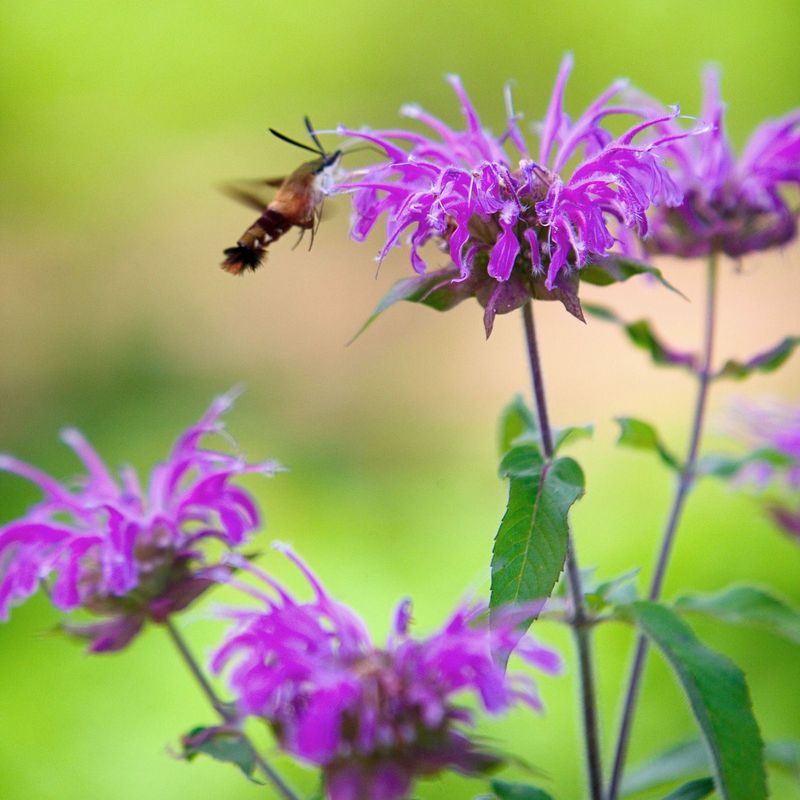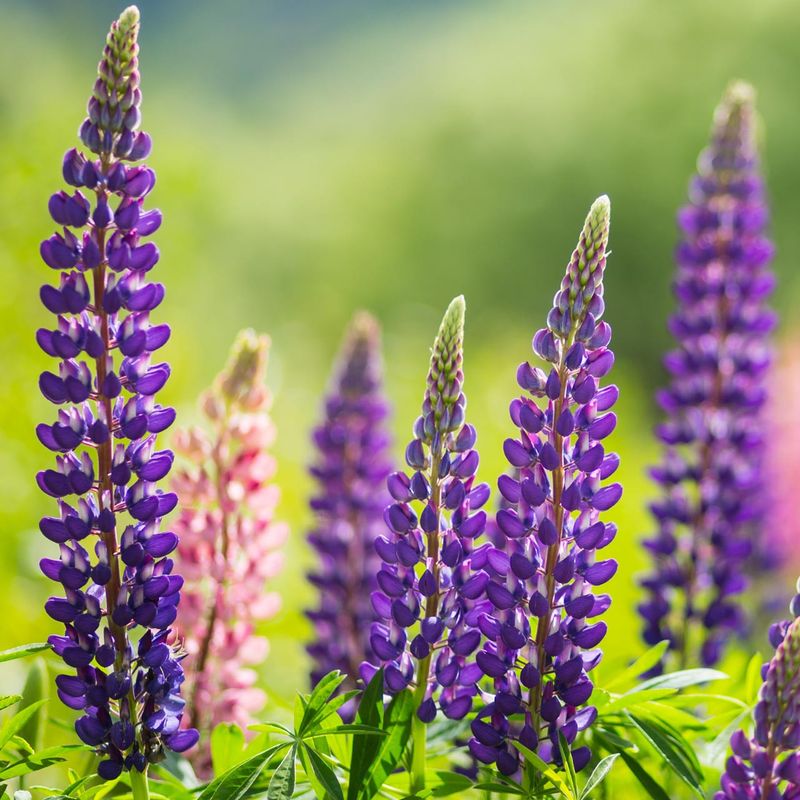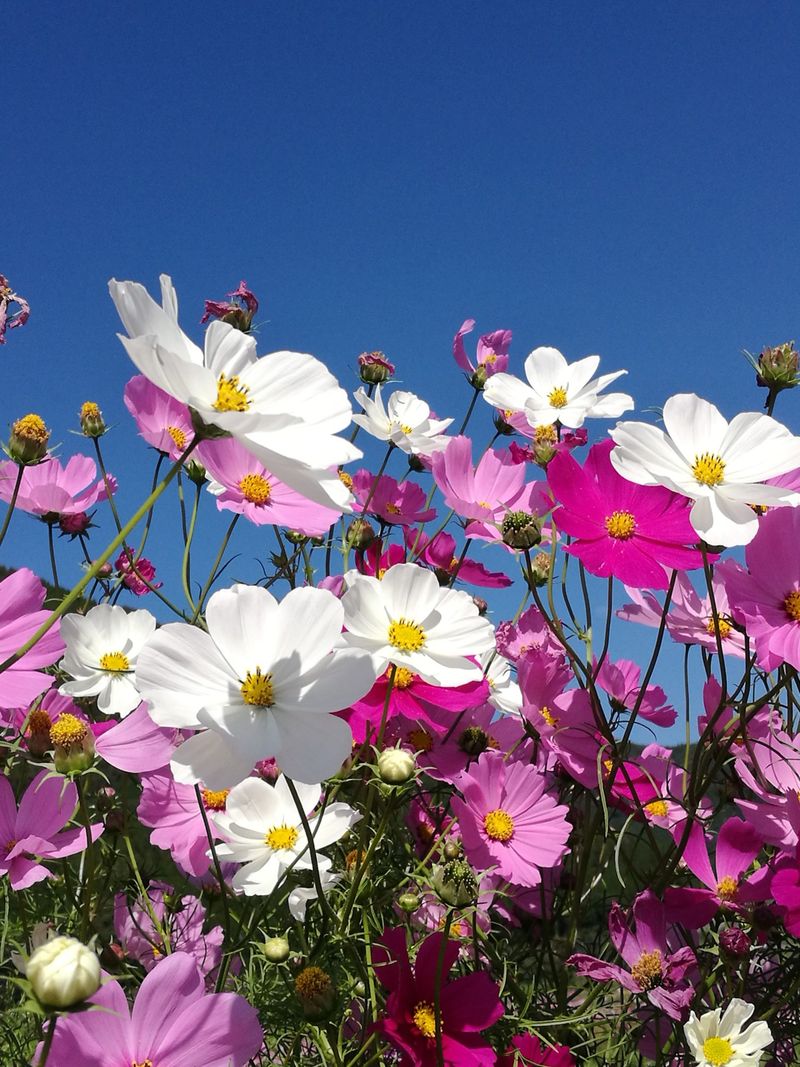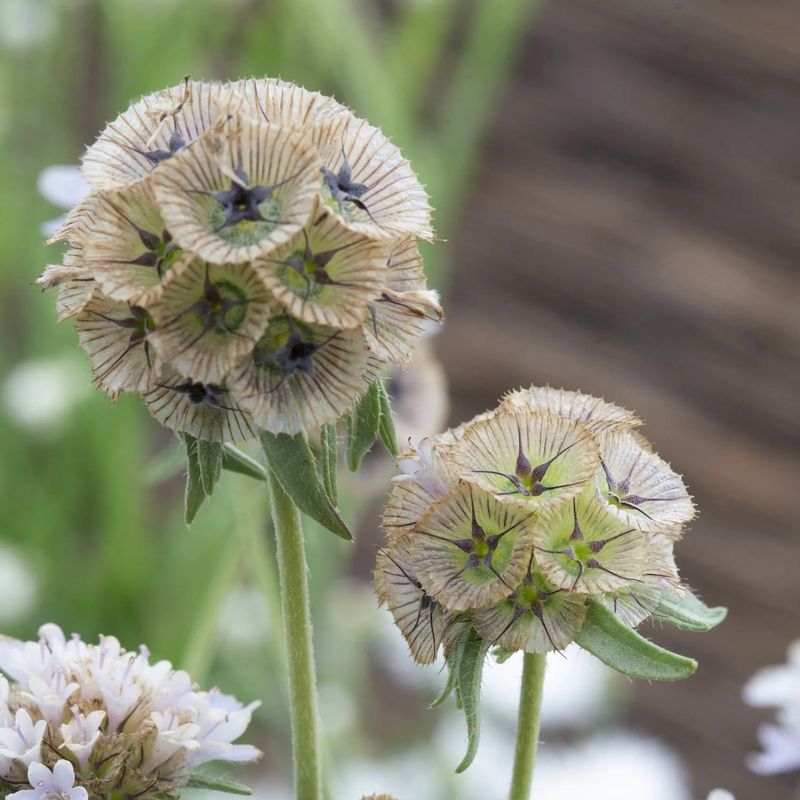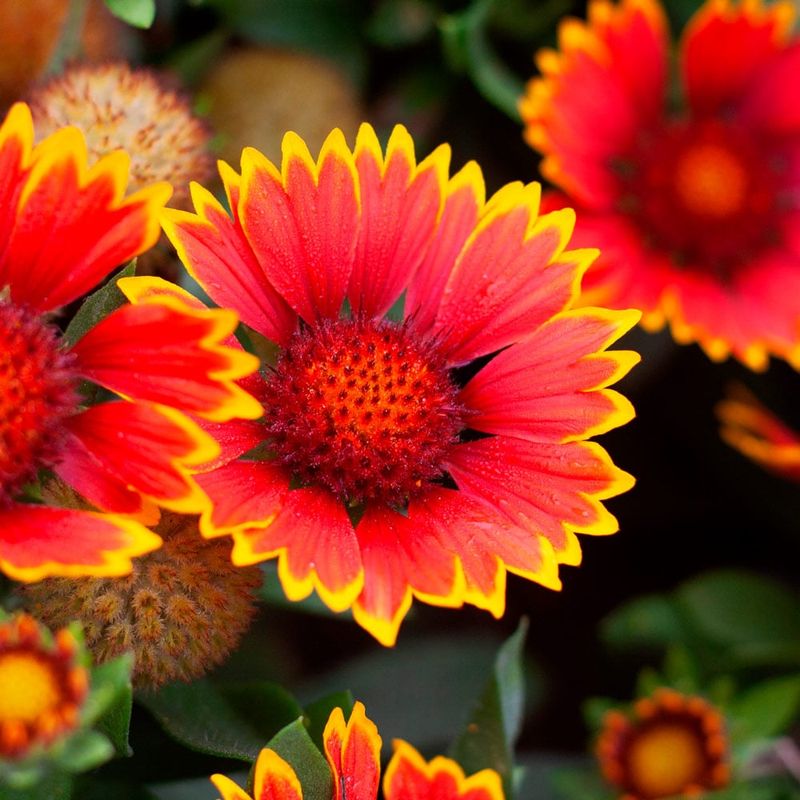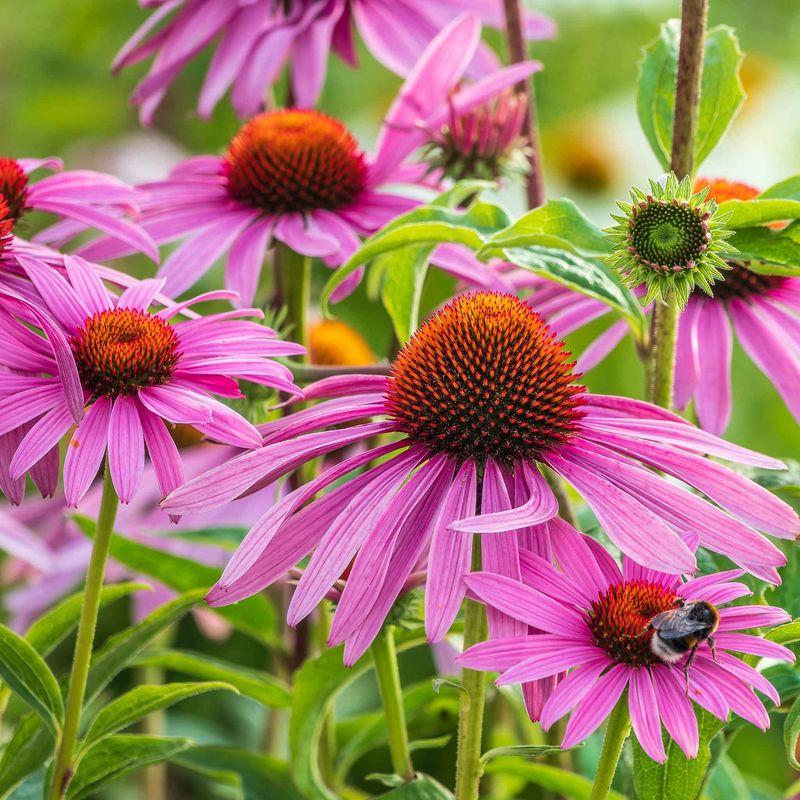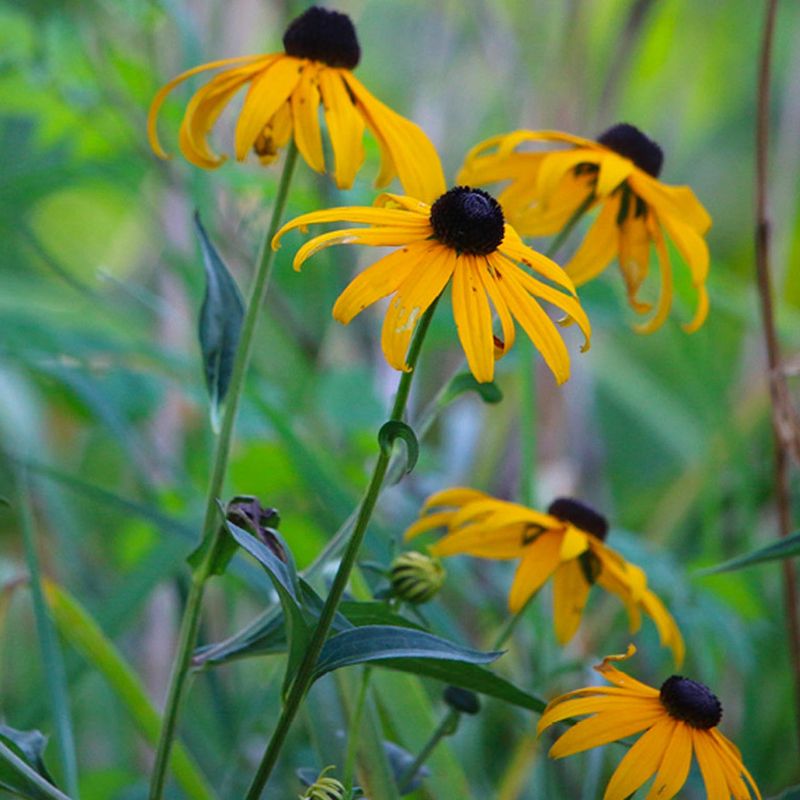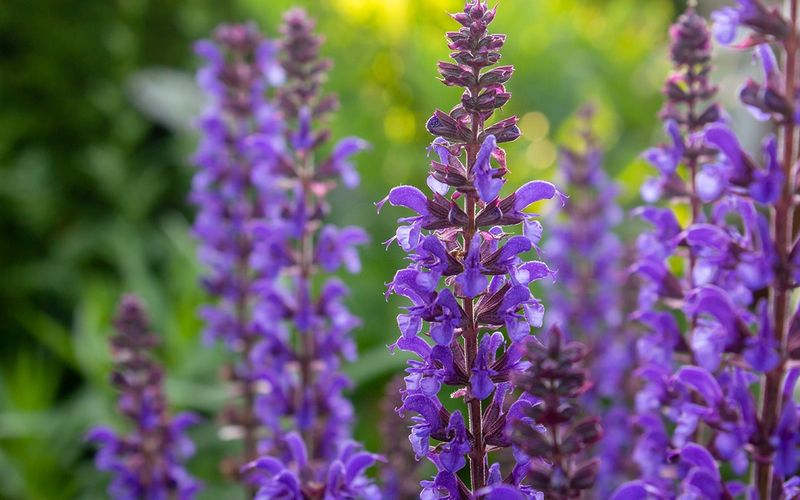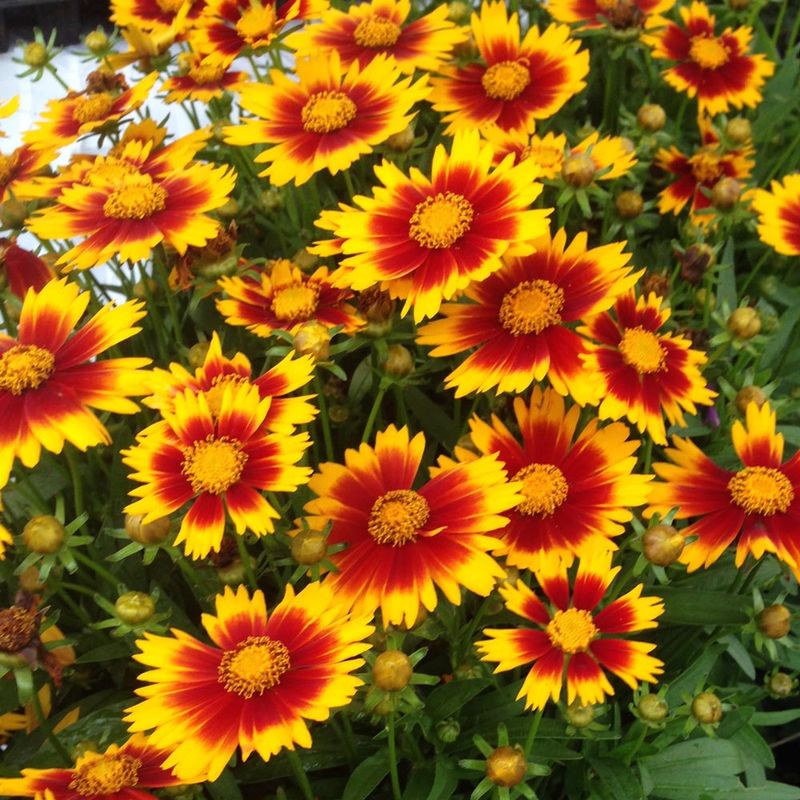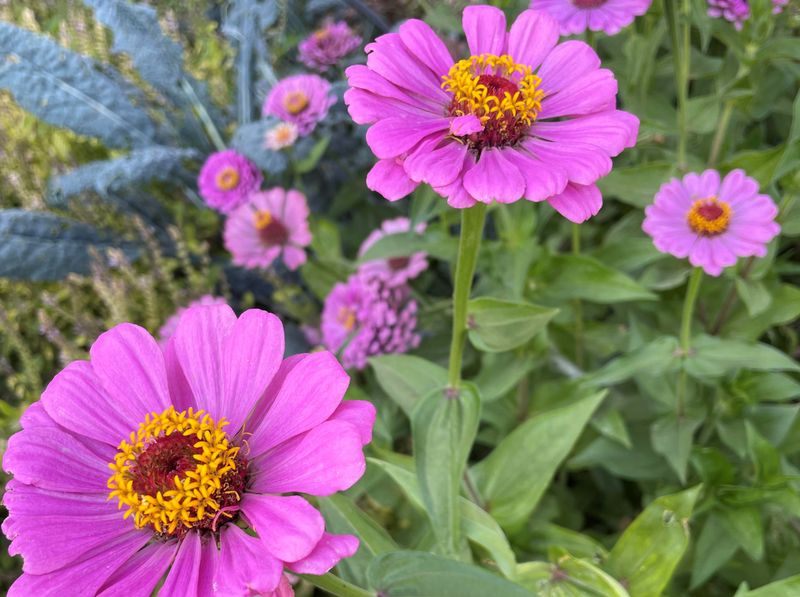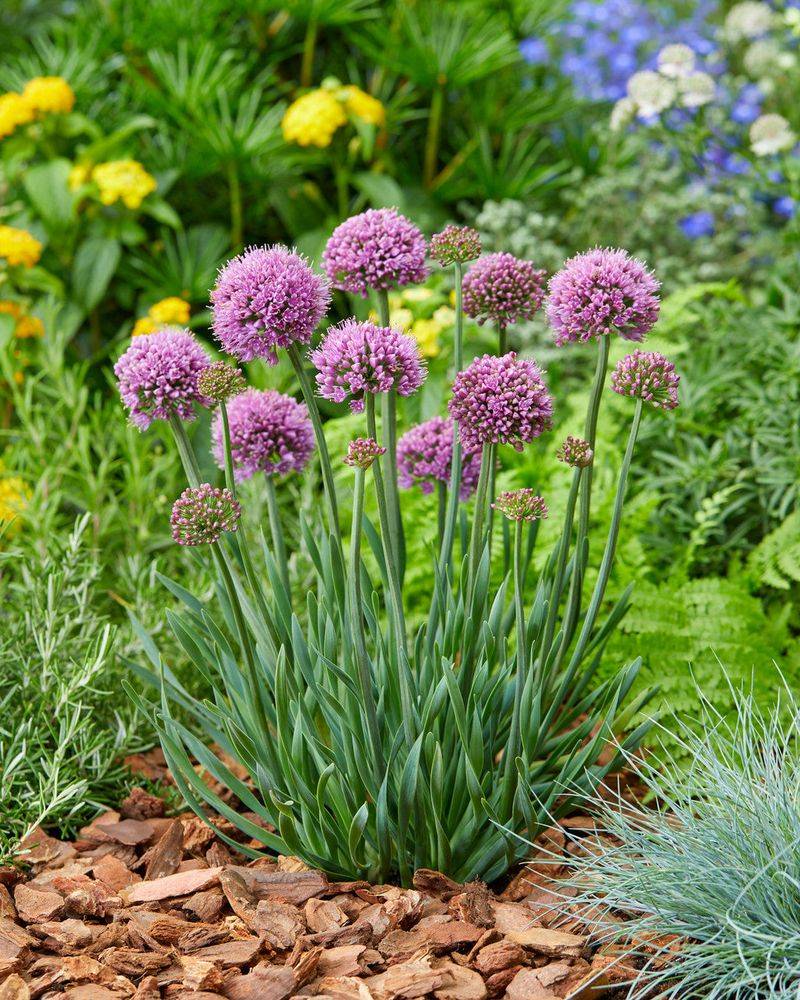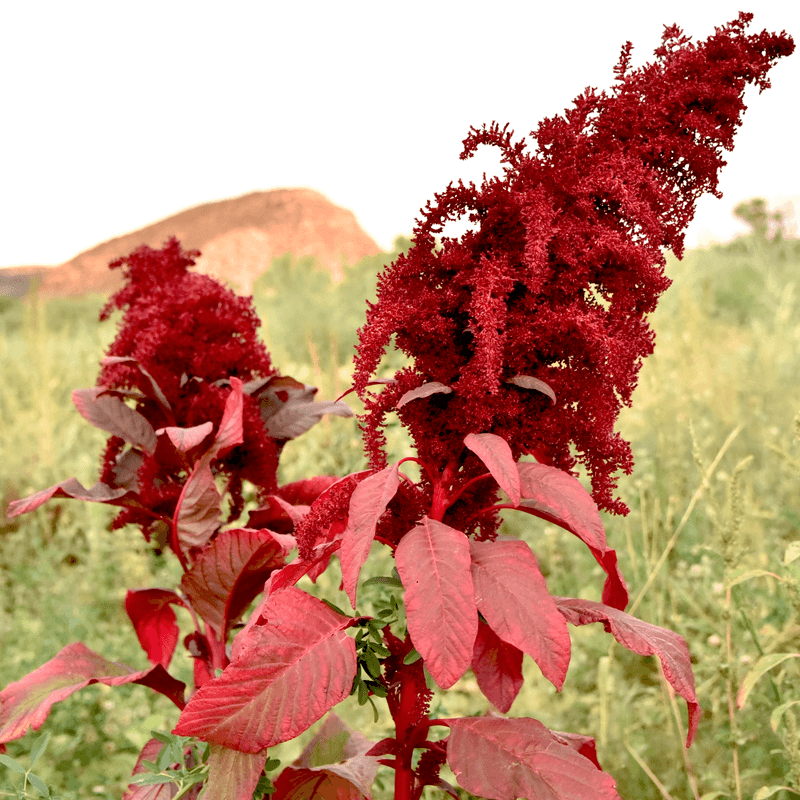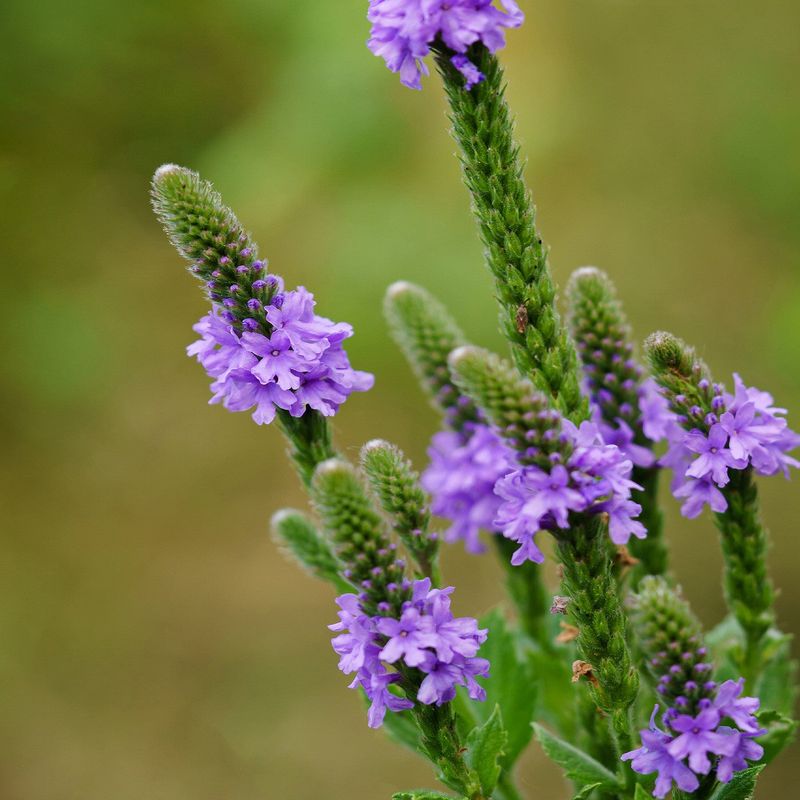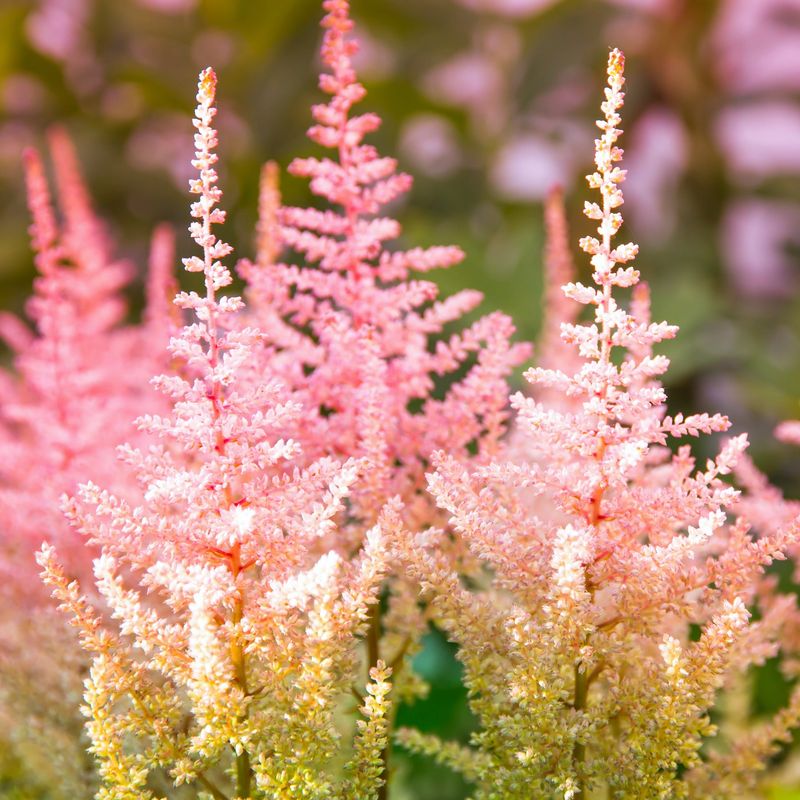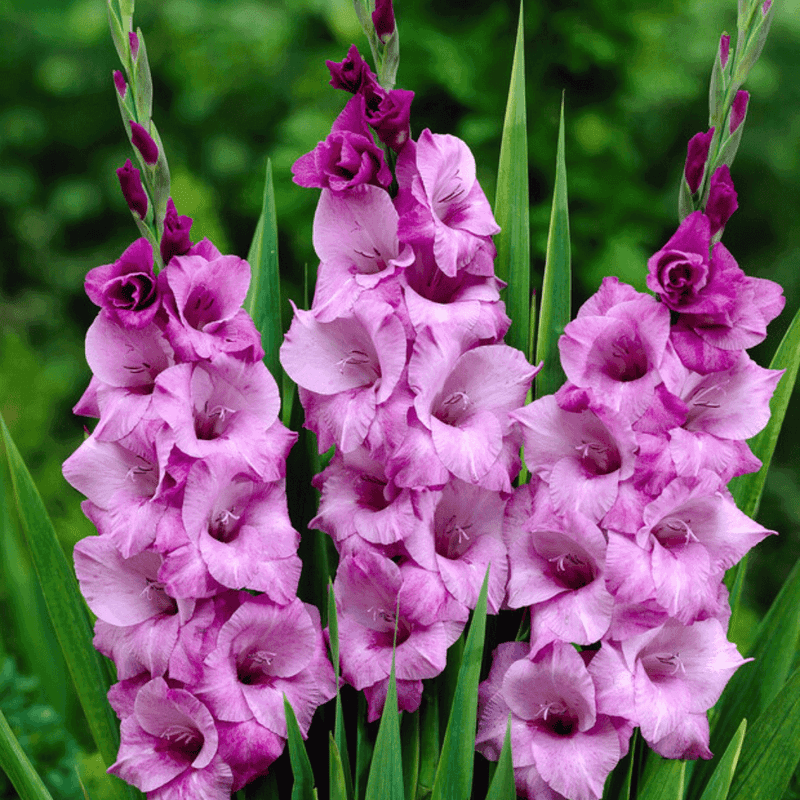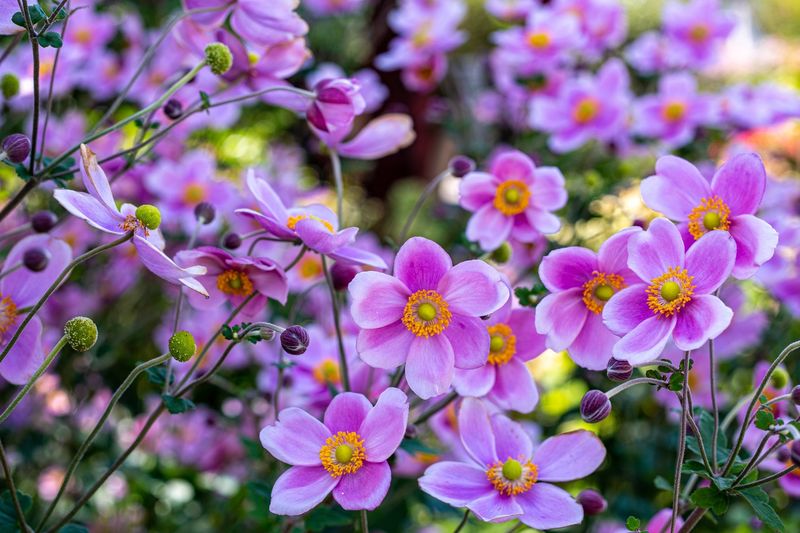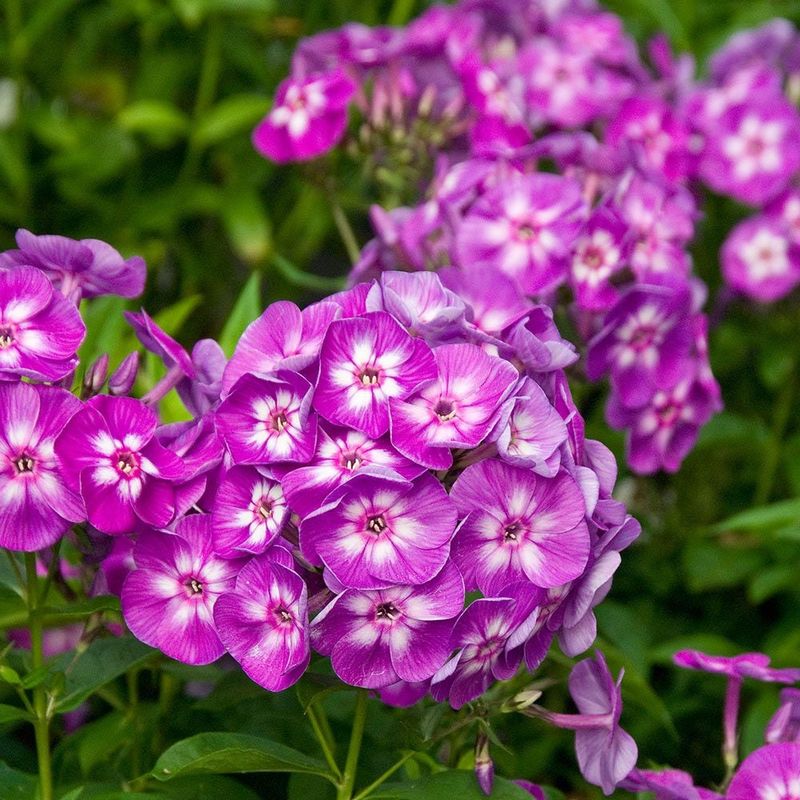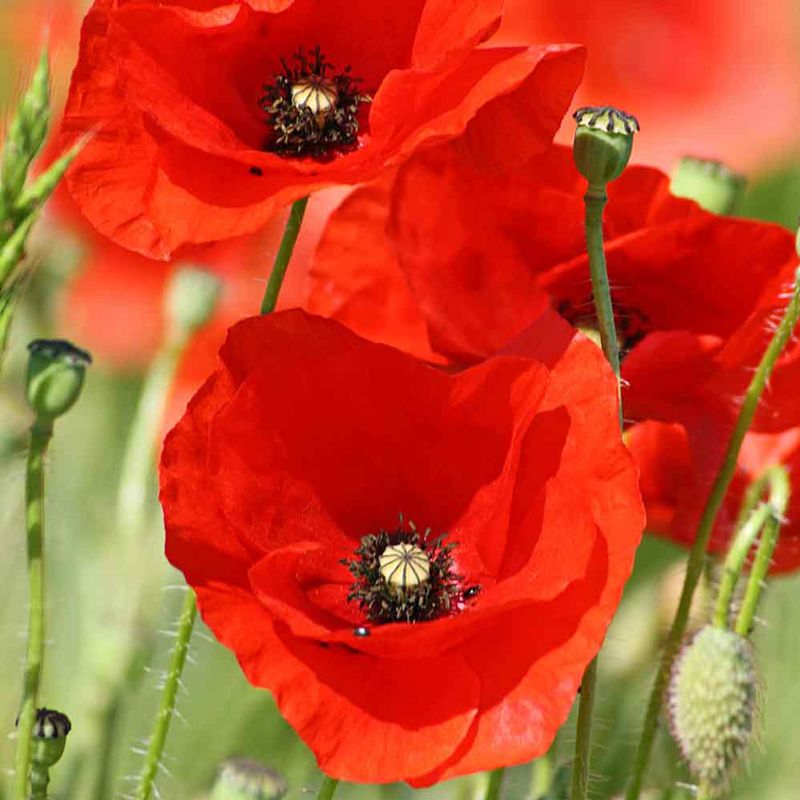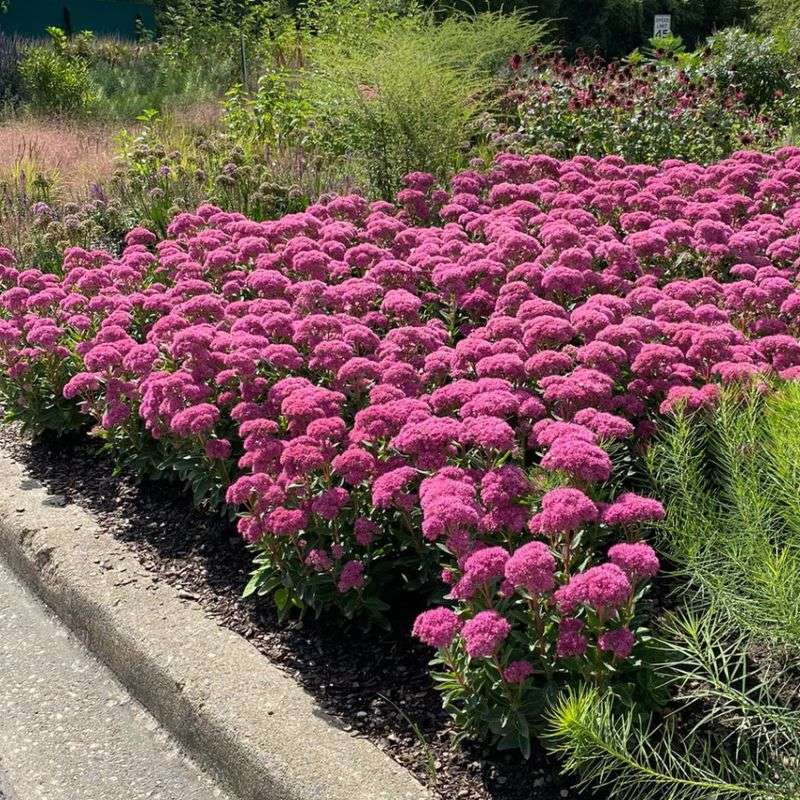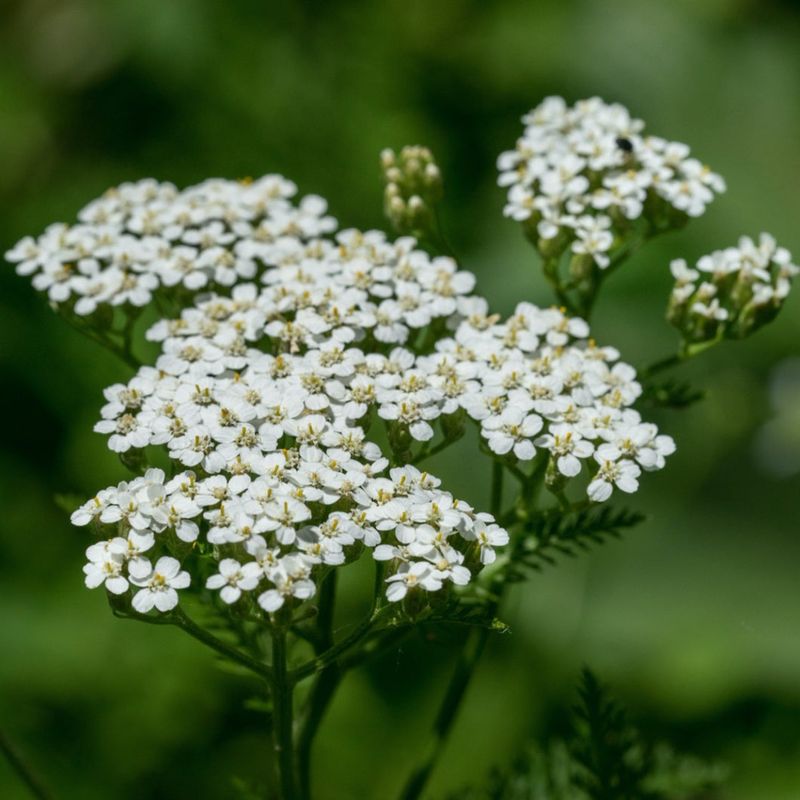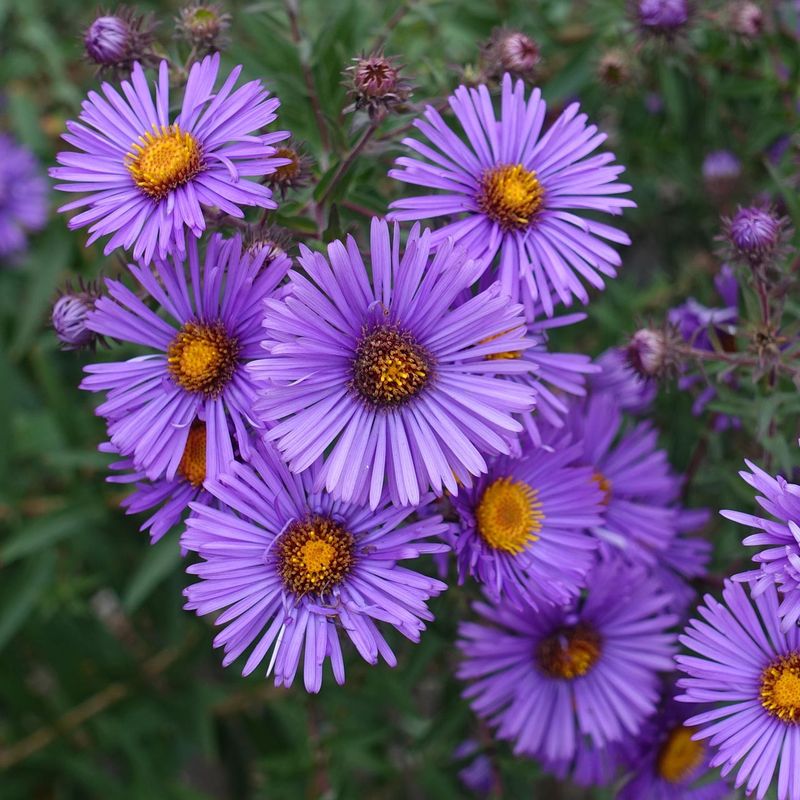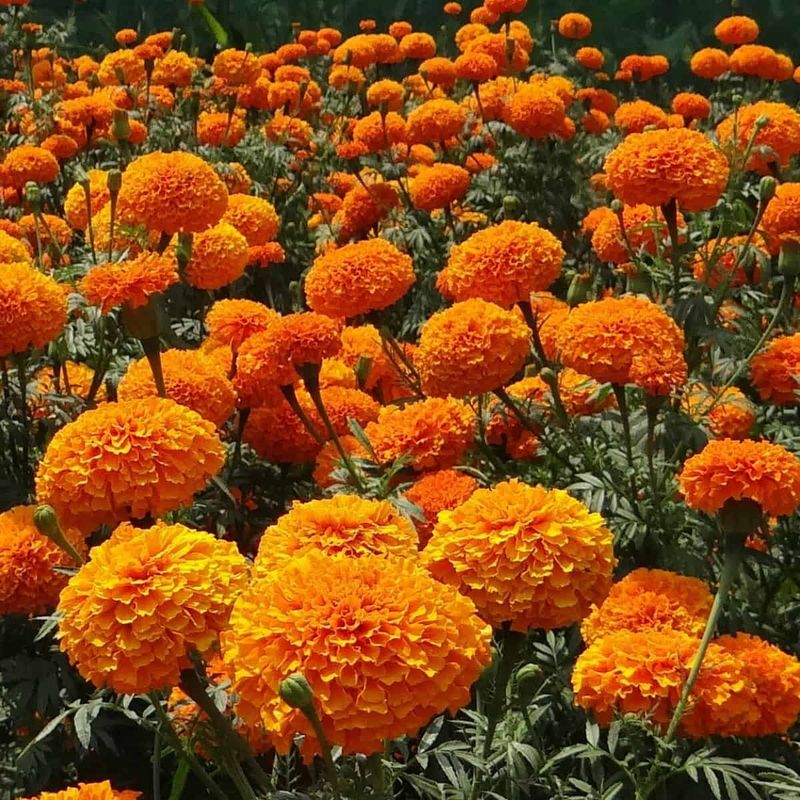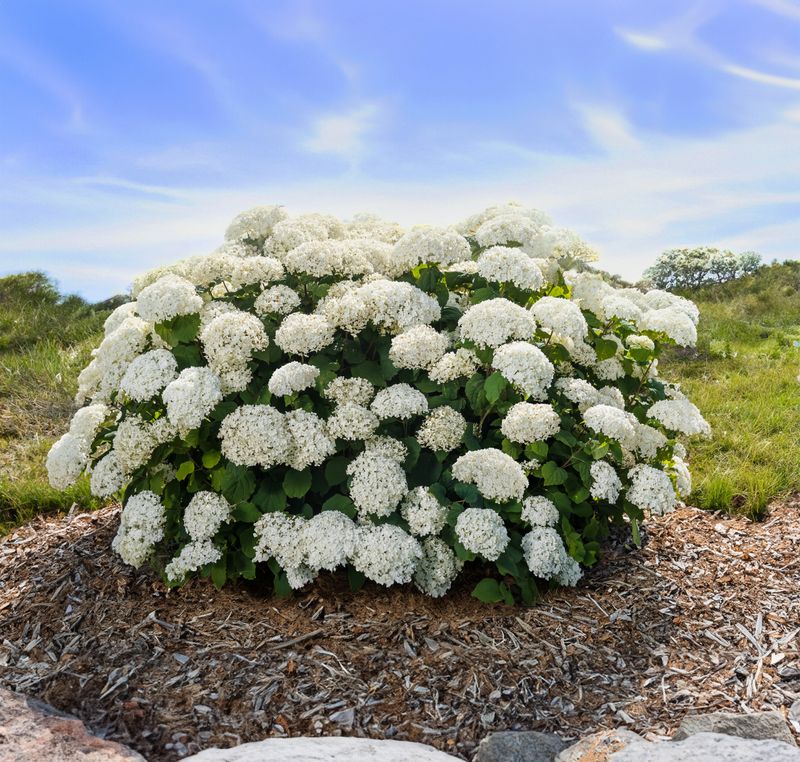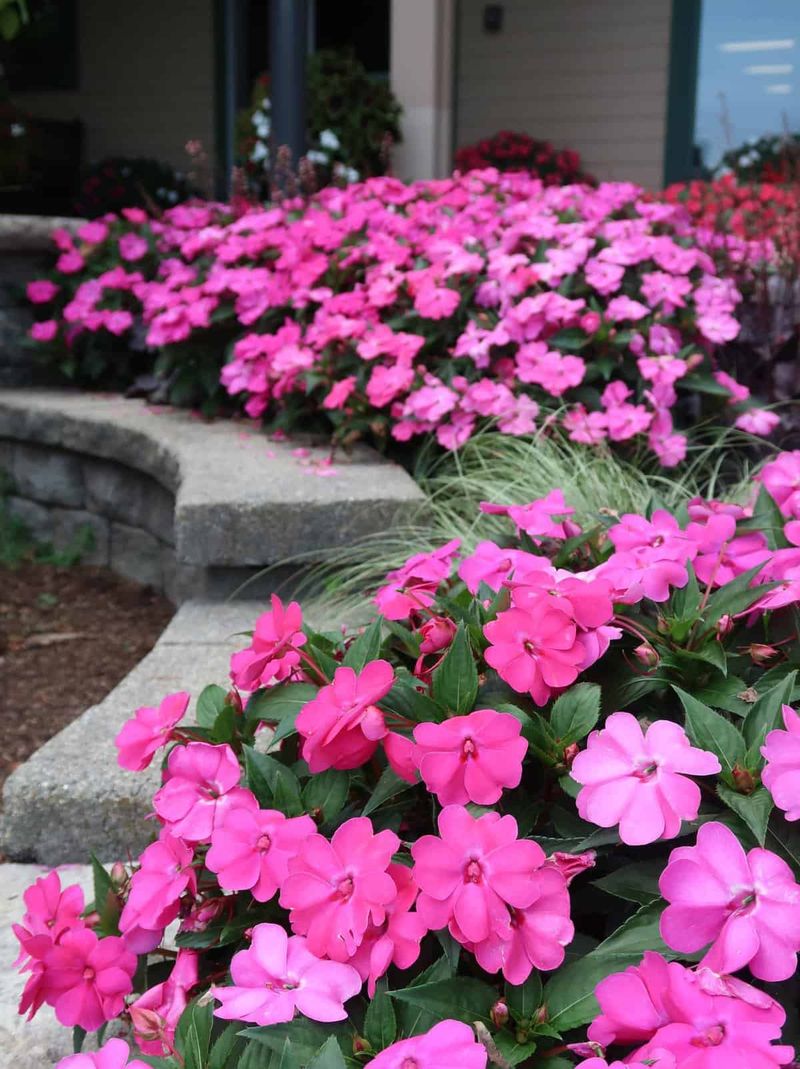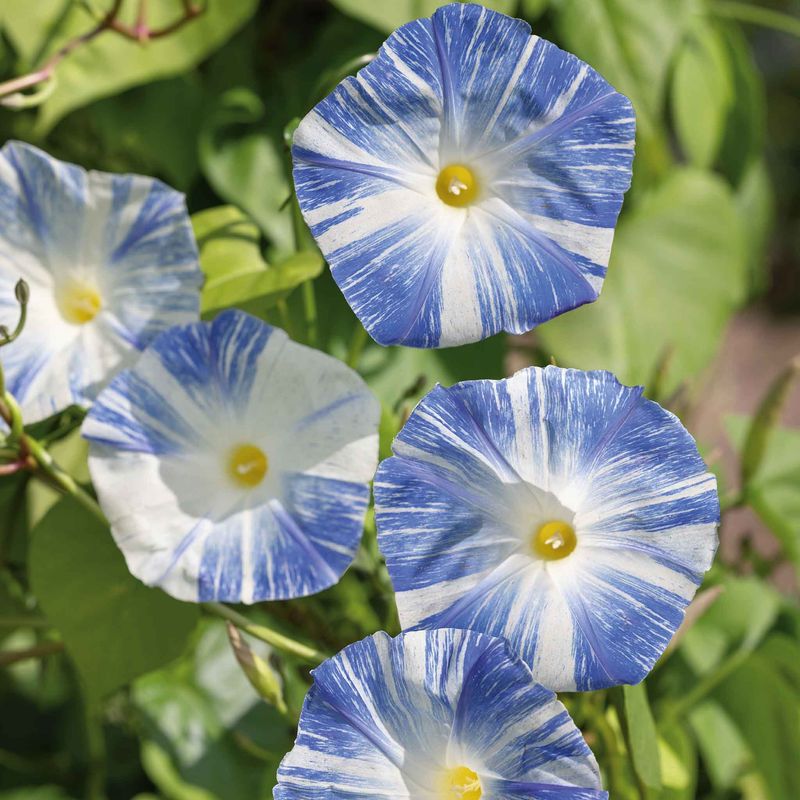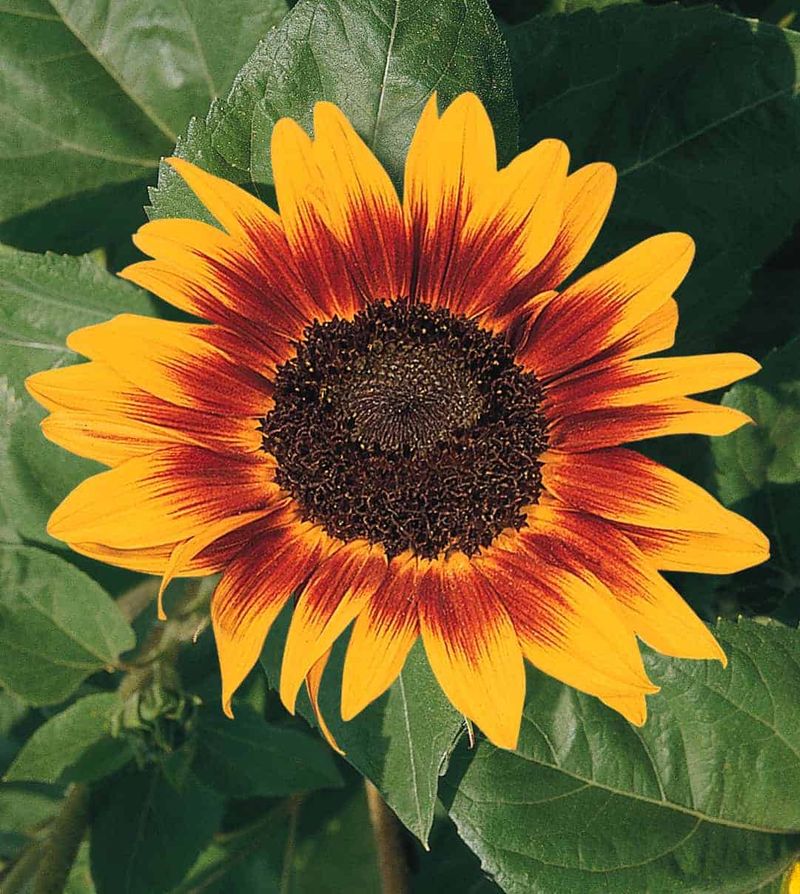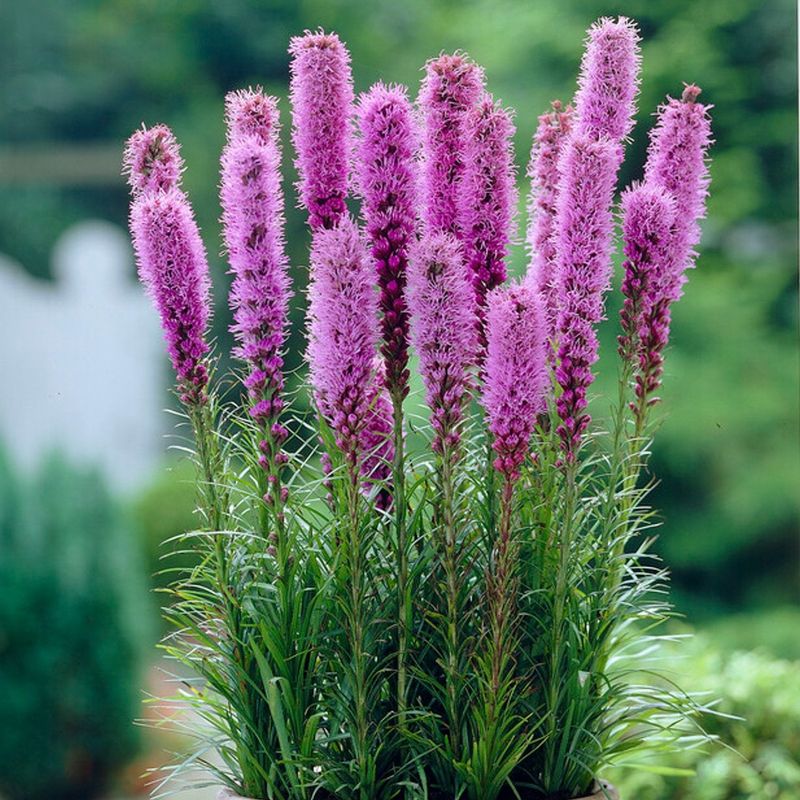Have you ever stared longingly at the lovely larkspur and thought, This would be perfect for my garden, if only… Well, you’re not alone!
I’ve been there too, questioning if it’s worth the effort, only to realize there are so many other fantastic plants out there that can steal the show just as easily (and maybe with less fuss)!
I’ve put together a list of 32 stunning plants that can effortlessly replace larkspur in your garden. From fresh blooms to those attention-grabbing leaves, you’ll find something here to make your garden pop.
1. Peony
That moment when nature gifts us a bouquet. The peony, with its lush petals, brings that to life. A classic garden favorite, it’s known for its fragrant blooms and longevity.
You won’t miss larkspur’s upright spikes when you see its billowy blossoms. Gardeners love peonies for their resilience and ability to thrive in various climates.
Plus, their flowers make for stunning bouquets. Whether you’re a novice or a pro, peonies provide beauty and ease. Just remember to give them some sun and a little patience.
2. Foxglove
A magical touch of the woods. Foxgloves add a whimsical charm to any garden. These lovely spikes are a favorite among pollinators and garden enthusiasts alike.
Unlike larkspur, they offer a more varied color palette, from pinks to purples. Just a word of caution: they’re quite toxic, so plant responsibly if you have pets or kids.
However, their enchanting beauty makes them a popular choice for cottage gardens and naturalized areas alike.
3. Delphinium
A royal nod from nature. Delphiniums, often confused with larkspur, boast majestic spikes that grace many a garden. They’re perfect for adding vertical interest and a pop of color.
Unlike their lookalike, delphiniums can offer a broader spectrum of hues and are ideal for those who love a dramatic flair.
Just ensure they’re planted in well-drained soil and get plenty of sunlight. With their towering presence, they make a statement in any floral arrangement.
4. Hollyhock
Hollyhocks hold a special place in my heart. They always remind me of my grandmother’s garden, where they stood proudly against the fence.
Their towering stalks and vintage charm made them impossible to miss. I’ve found them to be a fantastic replacement for larkspur, offering height and beautiful color in abundance.
They’re surprisingly easy to grow, even in less-than-ideal soil. Plus, they bring a touch of nostalgia that’s hard to beat.
5. Snapdragon
A pop of playfulness. Snapdragons bring joy and color to any garden. They’re an absolute favorite among kids, who love to make the dragon ‘talk’ by pinching its sides.
These annuals are easy to grow and come in a dazzling array of colors, making them a versatile replacement for larkspur.
Whether in containers or garden beds, snapdragons provide a cheerful display throughout the season. Just ensure they have good drainage to flourish.
6. Bee Balm
A party for pollinators. Bee balm is a magnet for bees and butterflies, thanks to its fragrant and bright flowers. If you’re looking to replace larkspur with something equally attractive to wildlife, this is it.
Its shaggy blooms come in reds and pinks, adding a splash of color and texture. It’s a hardy perennial that thrives in sunny spots.
Not only does it make a statement in your garden, but it also supports local biodiversity. A win-win for nature lovers!
7. Lupine
Nature’s palette on display. Lupines are celebrated for their tall, spiky flowers that bring a painterly quality to gardens.
These perennials are a fantastic alternative to larkspur, offering a similar silhouette with added color. Their nitrogen-fixing ability also improves soil health, making them a gardener’s friend.
With choices ranging from deep purples to soft pastels, there’s a lupine for every color scheme. Plant them in groups for a truly spectacular show each spring.
8. Cosmos
Whispers of the cosmos. These airy annuals bring a touch of whimsy with their daisy-like flowers. Cosmos are a delightful option for those wanting a softer aesthetic.
Unlike larkspur, cosmos bloom prolifically and are incredibly easy to grow. They’re perfect for filling gaps in borders or adding height to a summer garden.
Their ability to thrive in poor soil and withstand drought makes them an excellent choice for low-maintenance gardeners.
9. Scabiosa
A pincushion of nature. The scabiosa offers a charming alternative to the usual suspects. Known as the ‘pincushion flower,’ it attracts butterflies and adds texture to any garden.
This perennial thrives in full sun and well-drained soil, making it a hardy choice. Its tactile flowers provide visual interest without overwhelming the senses.
Scatter them through rock gardens or use them as border plants. Their understated elegance suits a variety of garden styles.
10. Gaillardia
The sun’s own gift. Gaillardia, or ‘blanket flower,’ bursts forth with red and yellow hues. These perennials are like sunshine on a stem.
Replacing larkspur with gaillardia means inviting a long-lasting bloom period and a carefree attitude into your garden.
Drought-tolerant and easy to grow, they thrive in poor soils, making them a practical yet beautiful choice. Their bold colors and daisy-like form provide a cheerful presence that persists through the summer.
11. Echinacea
Echinacea, or coneflowers, have quickly become one of my garden favorites! Not only do their daisy-like blooms light up the garden, but they also have medicinal benefits.
These plants are a solid alternative to larkspur, with their sturdy nature and colors, from soft pinks to bold oranges. They attract pollinators like bees and butterflies, making them perfect for any garden ecosystem.
I love how they thrive in sunny spots with minimal fuss. Plus, their herbal benefits for teas and immune-boosting remedies add a little extra magic to my gardening routine!
12. Rudbeckia
Nature’s burst of sunshine. Rudbeckia, commonly known as black-eyed Susans, are adored for their golden blooms.
If you’re after a bright and bold presence, they can replace larkspur’s more subdued tones. These hardy perennials are reliable and come back year after year with minimal fuss.
Plant them in drifts for a stunning late-summer display. Their tolerance for drought and varied soil conditions makes them a versatile and dependable choice for any gardener.
13. Salvia
A symphony of spikes. Salvias bring a sense of drama to any outdoor space. These perennials are a great pick for replacing larkspur if you’re after something both structured and colorful.
Known for their long blooming season and bee-friendly nature, salvias thrive in sunny locations. Their palette ranges from deep blues to purples.
This versatility allows them to fit effortlessly into a wide range of garden designs, from formal to wildflower.
14. Coreopsis
A dance of yellows. Coreopsis, or tickseed, brings a playful touch with its sunny disposition and delicate blooms. If larkspur’s height isn’t a necessity, these cheerful perennials might be just the ticket.
Known for their long blooming period, coreopsis requires little care, making them perfect for low-maintenance gardening.
Their bright yellow flowers with contrasting centers can liven up borders or wildflower gardens. Plus, they’re loved by pollinators, ensuring your garden stays buzzing with life.
15. Zinnia
A riot of color. Zinnias are the life of the garden party, offering blooms in nearly every color imaginable. These annuals are a great alternative to larkspur if you want to brighten up your space.
They’re easy to grow and perfect for cutting gardens, providing long-lasting flowers for vases. With minimal requirements, zinnias thrive in sunny spots and need only regular watering.
Their lively presence and vast array of colors make them a favorite for gardeners who love a bit of variety.
16. Allium
Globes of wonder. Alliums stand tall with their spherical blooms, providing a sculptural element to the garden. If you’re replacing larkspur, consider these for their unique shape and form.
These perennials are known for their deer resistance and ability to attract pollinators. Plant them in clusters for a bold statement or mix them with other perennials for a varied texture.
With minimal maintenance needs, they thrive in sunny, well-drained spots, making them a practical yet artistic choice.
17. Amaranth
Amaranth has become one of my favorite plants for adding drama to the garden! Its rich, cascading flowers in shades of red, purple, and bronze are like a living work of art.
Standing tall with its plumed flowers, amaranth makes a stunning substitute for larkspur, offering both height and texture.
It’s perfect for creating a bold statement and adds a lush backdrop for other plants. Trust me, you’ll love the energy it brings to your garden!
18. Verbena
A touch of grace. Verbena’s clusters of tiny flowers bring charm and subtlety to the garden. This perennial is perfect if you’re looking to replace larkspur with something equally enchanting.
Its spreading habit and long blooming period make it ideal for ground cover or cascading from containers.
Known for attracting butterflies, verbena thrives in sunny locations and requires little maintenance. Whether in hanging baskets or flower beds, it’s a lovely choice for creating a serene garden environment.
19. Astilbe
Feathered elegance. Astilbe offers a gentle alternative to the more structured forms of larkspur. These perennials are perfect for shaded gardens and woodland areas.
They thrive in moisture-rich environments, making them ideal for planting near water features or in rain gardens. Astilbe’s delicate flowers and fern-like foliage enhance any garden’s texture and depth.
Their ability to flourish in less sunny spots provides versatility for gardeners with diverse planting conditions.
20. Gladiolus
A tower of blooms. Gladiolus offers vertical interest with its striking flower spikes. If larkspur’s height is what you crave, gladiolus won’t disappoint.
These summer bulbs are easy to grow and come in a vast array of colors, making them a versatile choice for cutting gardens.
Plant them in succession for continuous blooms throughout the season. Their dramatic presence adds flair to any garden, and they make exquisite cut flowers for indoor arrangements.
21. Japanese Anemone
I like how Japanese anemones fits perfectly in my garden! Their almost ethereal flowers pop up as the heat of summer wanes, adding a refreshing splash of color.
These perennials are a wonderful alternative to larkspur, with their graceful presence and slender stems that sway beautifully in the breeze.
They’re perfect for part shade and thrive in woodland gardens. Best of all, they’re low-maintenance and easy to grow, making them an effortless addition to any garden space.
22. Phlox
A fragrant carpet. Phlox offers a rich tapestry of colors for your garden. It’s a fantastic replacement for larkspur if you’re after something more compact yet equally refreshing.
These perennials are known for their lovely scent and long blooming period. Plant them in drifts for a ground-cover effect or use them to fill gaps in borders.
Their ability to attract butterflies and hummingbirds adds to their charm and ecological value.
23. Poppy
A painter’s dream. Poppies offer a splash of color that’s hard to ignore. If larkspur’s spikes don’t suit your fancy, poppies provide a more organic option.
These annuals and perennials are easy to grow and thrive in sunny spots. With varieties in red, orange, and even blue, poppies offer endless possibilities for garden design.
Their iconic flowers have inspired artists for centuries, making them a timeless choice for romantic gardens.
24. Sedum
A succulent surprise. Sedum, or stonecrop, offers both texture and color with its fleshy leaves and blooms. If you’re after a low-maintenance alternative to larkspur, sedum might just be the answer.
These drought-tolerant perennials are perfect for rock gardens or as ground cover in sunny areas. Their ability to withstand neglect and poor soil makes them a favorite for busy gardeners.
With flowers that attract pollinators, they also support a healthy garden ecosystem.
25. Yarrow
Nature’s medicine cabinet. Yarrow, with its feathery foliage and flat-topped flowers, offers a distinctive look and numerous benefits.
This perennial is an excellent replacement for larkspur’s more traditional forms. Known for its medicinal properties, yarrow can be used in teas and ointments.
Its ability to thrive in poor soils and attract beneficial insects makes it a valuable addition to any garden. With a range of colors available, it provides both beauty and function.
26. Aster
A starry affair. Asters bring late-season color with their daisy-like blooms, perfect for extending garden interest into fall. If larkspur’s summer show isn’t enough, asters offer a fresh perspective.
These perennials thrive in sunny locations and are loved by butterflies. With varieties ranging from short to tall, there’s an aster for every garden space.
Their ease of care and charming flowers make them a staple for autumn displays and pollinator gardens.
27. Marigold
Marigolds are a true garden hero! I always count on them for their cheerful blooms and their impressive ability to keep pests at bay.
If you’re looking for a foolproof alternative to larkspur, marigolds are your go-to. These easy-to-grow annuals love the sun and bloom all season long, brightening up any space.
Whether planted in borders, containers, or veggie beds, they add a splash of color while protecting your other plants. It’s like having a garden guard and a beautiful flower all in one!
28. Hydrangea
A splash of grandeur. Hydrangeas transform any shady nook into a lush retreat. For those looking to swap out larkspur, hydrangeas offer both drama and charm.
These shrubs thrive in part shade and require regular watering, but the payoff is a spectacular display of large, colorful flowers.
With varieties shifting colors based on soil pH, hydrangeas offer both visual interest and a touch of garden science. Their grand presence makes them a favorite for gardeners aiming for a lush landscape.
29. Impatiens
A burst of shade. Impatiens bring a splash of color to shaded areas, making them a go-to for gardeners with less sun. If larkspur’s sun-loving nature isn’t for you, impatiens offer a lush alternative.
These annuals are easy to grow and provide continuous blooms. They’re perfect for containers, hanging baskets, or garden beds where sun is scarce.
With their low maintenance needs and bright flowers, impatiens brighten up even the shadiest corners, offering a cheery escape.
30. Morning Glory
A twist of beauty. Morning glories bring a touch of nostalgia with their climbing habits and trumpet-shaped blooms. If larkspur’s upright form isn’t what you’re after, consider these charming climbers.
They’re ideal for trellises, fences, or arbors, offering a cascade of color. With flowers that open in the morning and fade by afternoon, they provide a daily surprise.
Easy to grow from seed, morning glories are a favorite for gardeners looking to cover unsightly views with a flourish.
31. Sunflower
A giant’s embrace. Sunflowers are a symbol of summer and cheer. If larkspur’s height is your goal, sunflowers deliver in spades.
These annuals are easy to grow and bring a sense of joy to any garden, attracting birds and pollinators alike. Plant them in sunny locations for best results.
Whether as a backdrop for shorter plants or a centerpiece in a children’s garden, sunflowers offer both beauty and a lesson in nature’s grandeur.
32. Liatris
A spike of wonder. Liatris, or blazing star, offers a unique vertical element with its feathery flower spikes. If larkspur’s form fascinates you, liatris is a fitting alternative.
These perennials are beloved by pollinators and provide a long-lasting show. Their drought tolerance and ability to thrive in sunny spots make them an easy-care option.
Use liatris in borders or wildflower gardens for a naturalized look. Their purple and white flower spikes add a touch of magic to any outdoor space.

